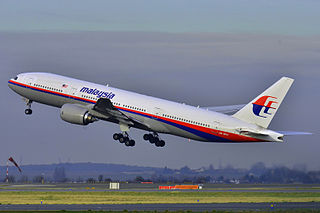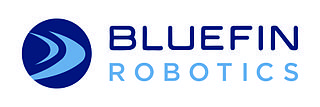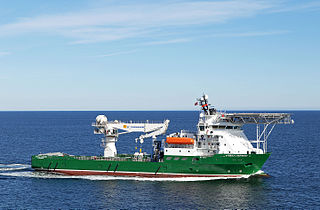
An autonomous underwater vehicle (AUV) is a robot that travels underwater without requiring continuous input from an operator. AUVs constitute part of a larger group of undersea systems known as unmanned underwater vehicles, a classification that includes non-autonomous remotely operated underwater vehicles (ROVs) – controlled and powered from the surface by an operator/pilot via an umbilical or using remote control. In military applications an AUV is more often referred to as an unmanned undersea vehicle (UUV). Underwater gliders are a subclass of AUVs.

Unmanned underwater vehicles (UUV), also known as uncrewed underwater vehicles and underwater drones, are submersible vehicles that can operate underwater without a human occupant. These vehicles may be divided into two categories: remotely operated underwater vehicles (ROUVs) and autonomous underwater vehicles (AUVs). ROUVs are remotely controlled by a human operator. AUVs are automated and operate independently of direct human input.
Bluefin or Blue Fin and variants may refer to:

Australian Border Force Cutter (ABFC) Ocean Shield is an offshore patrol vessel operated by the Australian Border Force. The ship was originally ordered in 2010 by DOF Subsea as an offshore support vessel, and was laid down by STX OSV as MSV Skandi Bergen in 2011. In 2012, the Australian Department of Defence was seeking a short-term replacement for the decommissioned Kanimbla-class amphibious landing ships, and negotiated to purchase the under-construction Skandi Bergen from DOF Subsea. The ship was completed, and entered Royal Australian Navy (RAN) service in mid-2012 as the civilian-crewed Australian Defence Vessel (ADV) Ocean Shield.

The REMUS series are autonomous underwater vehicles (AUVs) made by the Woods Hole Oceanographic Institution and designed by their Oceanographic Systems Lab (OSL). More recently REMUS vehicles have been manufactured by the spinoff company Hydroid Inc, which was a wholly owned subsidiary of Kongsberg Maritime. Hydroid was acquired by Huntington Ingalls Industries (HHI) in March 2020. The series are designed to be low cost, they have shared control software and electronic subsystems and can be operated from a laptop computer. They are used by civilians for seafloor mapping, underwater surveying, and search and recovery as well as by several navies for mine countermeasures missions.
The Knifefish is an autonomous unmanned underwater vehicle (UUV) under development by General Dynamics Mission Systems and Bluefin Robotics for the United States Navy. It is a propeller-driven minesweeping robot designed to replace the Navy's trained dolphins and sea lions after the retirement of the 50-year-old Marine Mammal Program in 2017. The Knifefish was first unveiled at a Navy exposition in April 2012, and was originally intended to operate in concert with the Navy's littoral combat ships (LCS) as part of a specialized counter-mine system.

The following lists events from 2014 in Malaysia.

Malaysia Airlines Flight 370 (MH370/MAS370) was an international passenger flight operated by Malaysia Airlines that disappeared from radar on 8 March 2014, while flying from Kuala Lumpur International Airport in Malaysia to its planned destination, Beijing Capital International Airport in China. The cause of its disappearance has not been determined. It is widely regarded as the greatest mystery in aviation history, and remains the single deadliest case of aircraft disappearance.
Tomnod was a project owned by Colorado-based satellite company DigitalGlobe that used crowdsourcing to identify objects and places in satellite images. It was announced Tomnod was no longer using crowdsourcing of images as of 1 August 2019.
Malaysia Airlines Flight 370 disappeared on 8 March 2014, after departing from Kuala Lumpur for Beijing, with 227 passengers and 12 crew members on board. Malaysia's then Prime Minister, Najib Razak, stated that the aircraft's flight ended somewhere in the Indian Ocean, but no further explanation was given at the time. Despite searches finding debris which nearly certainly originated from the crash, official announcements were questioned by many critics, and several theories about the disappearance were proposed. Some of these were described as conspiracy theories.
The Joint Agency Coordination Centre (JACC) is an Australian government agency which was established on 30 March 2014 to coordinate search and recovery operations for Malaysia Airlines Flight 370, which disappeared on 8 March 2014 and was soon thereafter determined to have ended in the Southern Indian Ocean, within Australia's concurrent aeronautical and maritime search and rescue regions. The JACC is an agency within Australia's Department of Infrastructure and Regional Development, headed by Judith Zielke. It does not perform any search, recovery, or investigation activities, but coordinates the search effort and serves as a primary point of contact for information about the search for media and families of Flight 370 passengers.

MV Fugro Equator is a survey vessel owned and operated by Dutch company Fugro to provide a range of offshore survey capabilities.

The disappearance of Malaysia Airlines Flight 370 led to a multinational search effort in Southeast Asia and the southern Indian Ocean that became the most expensive search in aviation history.

The analysis of communications between Malaysia Airlines Flight 370 and Inmarsat's satellite telecommunication network provide the primary source of information about Flight 370's location and possible in-flight events after it disappeared from military radar coverage at 02:22 Malaysia Standard Time (MYT) on 8 March 2014, one hour after communication with air traffic control ended and the aircraft departed from its planned flight path while over the South China Sea.

The timeline of Malaysia Airlines Flight 370 lists events associated with the disappearance of Malaysia Airlines Flight 370—a scheduled, commercial flight operated by Malaysia Airlines from Kuala Lumpur International Airport to Beijing Capital International Airport on 8 March 2014 with 227 passengers and 12 crew. Air traffic control lost contact with Flight 370 less than an hour into the flight, after which it was tracked by military radar crossing the Malay Peninsula and was last located over the Andaman Sea. Analysis of automated communications between the aircraft and a satellite communications network has determined that the aircraft flew into the southern Indian Ocean, before communication ended shortly after 08:19 (UTC+8:00). The disappearance initiated a multi-national search effort that became the most expensive search in aviation history.

Bluefin Robotics is an American robotics company, headquartered in Quincy, Massachusetts, which specialises in the design and manufacture of military and civilian autonomous underwater vehicles (AUVs) and related technology. The company was founded in 1997, and became a wholly owned subsidiary of Battelle Memorial Institute in 2005. Its products include the Bluefin-21 underwater search robot and its military derivative, the Knifefish minesweeping AUV, which entered service with the United States Navy in 2017. Bluefin was involved in the development of several advanced Navy projects, including the Black Pearl AUV and the Proteus optionally-manned submersible.

The MV Havila Harmony is a multi-role, dynamically-positioned support vessel built in 2005 for subsea construction and support operations. The vessel is owned by Havila Shipping and currently on long-term charter to Fugro.

Seabed Constructor is a multipurpose offshore vessel owned by Swire Seabed and contracted since December 2016 to British-owned hydrographic survey company Ocean Infinity, based in Houston, Texas, United States. Previously known as Olympic Athene and originally Olympic Boa, the ship was launched in 2013 and is flagged in Norway. The ship is designed to conduct geophysical and geotechnical surveys of the seabed, support the construction or demolition of underwater structures, conduct trenching and excavation operations, and serve as a ROV platform for the company's autonomous underwater vehicles and unmanned surface vehicles. The ship is 114 metres (374 ft) in length, with a 22 metres (72 ft) beam, a gross tonnage of 7,883, and deadweight tonnage of 6,480 metric tons. Its maximum speed is 14.1 knots.

Ocean Infinity is a marine robotics company based in Austin, Texas, United States and Southampton, United Kingdom and was founded in 2017. The company uses robots to obtain information from the ocean and seabed.
Echo Voyager is an autonomous underwater vehicle (AUV) built by Boeing.











